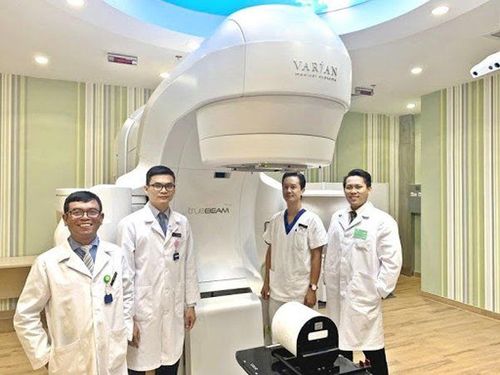SUMMARY
Purpose: The objective of this study was to compare the dosimetric characteristics of three-dimensional conformal radiotherapy (3D-CRT) and volumetric-modulated arc therapy (VMAT) for thoracic esophageal cancer.
Materials and Methods: We performed 3D-CRT, VMAT planning for five patients with thoracic esophageal cancer. The dose-volume histogram for each plan was extracted and the mean dose and clinically significant parameters were analyzed.
Results: Analysis of target coverage showed that the conformity index (CI) of VMAT were significantly differences better than 3D-CRT (p = 0.0000) but homogeneity index between 2 techniques were not significantly differences (p = 0.6631). For the comparison of OAR, lung V5Gy, V10Gy of VMAT plans were higher than of 3D-CRT but its V20Gy and V30Gy were much lower (p = 0.0004, 0.019, 0.0054 and 0.0230 respectively). Heart dose from VMAT plans had lower values than 3D-CRT: V30Gy (p = 0.0116), V40Gy (p = 0.0022), and V50Gy (p = 0.0049). As a result, Dmax to Spinal Cord was much lower in VMAT plans (p = 0.0005).
Conclusion: VMAT has not proven its superiors in terms of target coverage, but much less V20Gy, V30Gy of Lung and heart dose parameters. So, VMAT could be feasibly applied for thoracic esophageal carcinoma.













